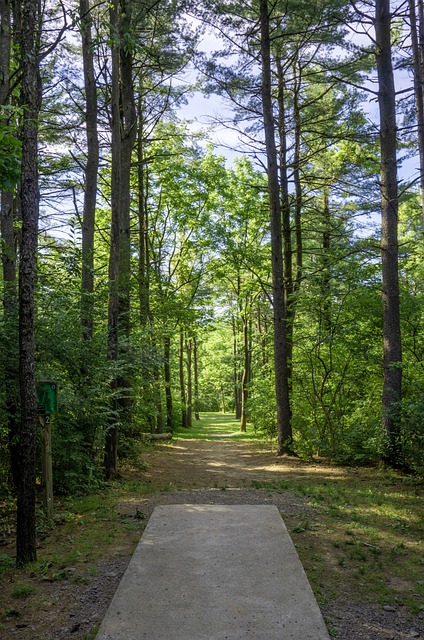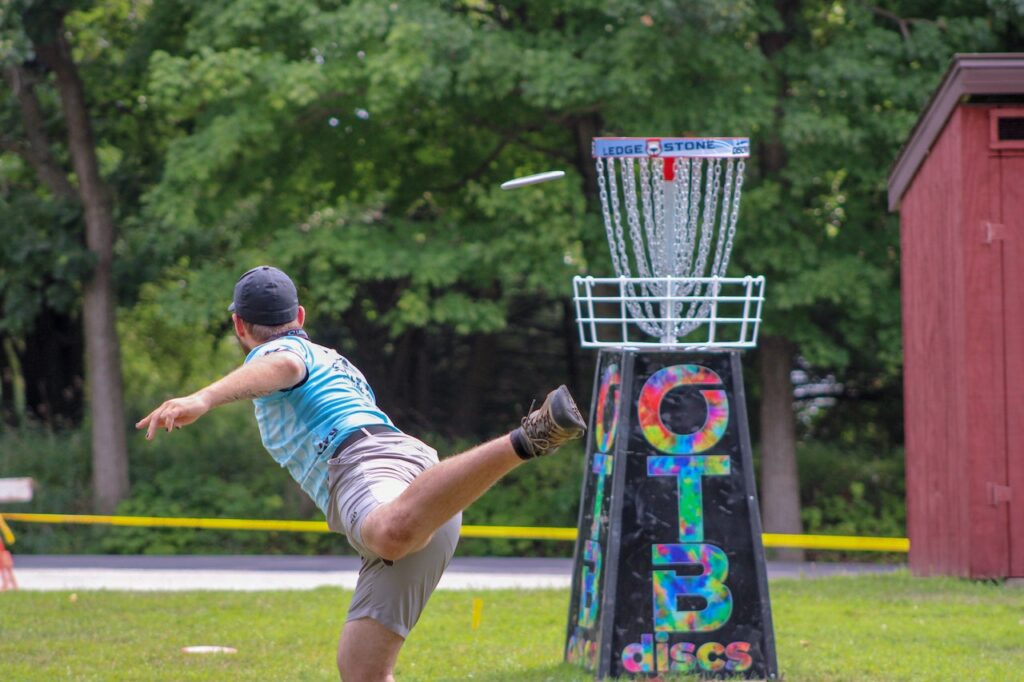Hello fellow Disc Golf enthusiasts, it’s Anna, your disc golfing companion. One of the most frequently asked questions in our community revolves around achieving distance in our throws. “How far can I accurately throw a disc in disc golf?” To answer this, we’ll dig into the heart of disc golf, exploring the techniques, common hurdles, and secrets that pros employ to make those jaw-dropping long-distance throws.
How Do You Throw a Disc for Maximum Distance?
To maximize the distance of your throw, you need to consider three key elements: the disc selection, your throwing technique, and the body mechanics involved.
The disc selection plays a major role in a throw’s distance. Discs are designed with specific characteristics meant to accommodate different types of throws. Distance drivers, for instance, often feature long beveled edges and shallow rims, which allow them to reach their maximum distances during high-speed turns and fades. So before you make your throw, take the time to select the right type of disc for your desired distance.
Your throwing technique also plays a major role in achieving maximum distance. To throw for maximum distance, you must minimize the spin you put on the disc and increase the speed at which it leaves your hand. You can do this by having a firm grip with all four fingers near the rim of the disc, as well as by using your arm and body to generate power and momentum.
Finally, the body mechanics of a throw is critical in achieving maximum distance. When throwing for distance, it’s important to move not just your arms but also your entire body to increase speed and minimize spin. Stand with one foot forward and make sure you use the whole weight of your body when transferring the weight from back to front. Keep your arm at shoulder height, do a slight hop forward, and use your legs to drive you through the throw.
How Do You Throw a 300 Feet Disc?
Hitting that elusive 300 feet mark is a significant milestone in disc golf. That requires good body mechanics, proper technique, and the right disc selection. To throw a disc for maximum distance, you need to generate as much power and momentum as possible with your whole body while minimizing spin on the disc.
So, how do you do it?
Start by selecting the right disc for distance throwing. Distance drivers are designed to reach their maximum distance during high-speed turns and fade. Look for a disc with long beveled edges and shallow rims, as these will help you to get the most out of your throw.
Once you have chosen the right disc, it’s time to focus on technique. To maximize distance, you should grip the disc firmly with all four fingers near the rim and focus on transferring the weight from back to front. Stand with one foot forward, keep your arm at shoulder height, do a slight hop forward as you throw, and use your legs to drive the disc through the air. Finally, remember to stay relaxed throughout the motion to generate power and momentum in an efficient manner.
How hard do you have to throw, to throw 300 feet?
When it comes to the farthest a human can throw, there is no set record. However, in 2019, former American footballer and disc golfer Ryan Reiff achieved a world-record distance of 437ft (133m). This incredible feat was achieved with a combination of technique, power, and mental focus. Reiff’s record stands as proof that anything is possible when it comes to throwing distance in disc golf.
How Do You Throw a Disc Straight and Far?
Throwing a disc both straight and far is a challenge that requires mastery over your throw’s angle, speed, and spin. A flat release, meaning the disc is parallel to the ground upon release, is crucial for a straight flight. Pairing this with the correct disc selection and a well-mastered throwing technique will help you achieve straight, long-distance throws.
How Far Behind Your Disc Can You Throw in Disc Golf?
The rules of disc golf stipulate that when throwing, your supporting point must be on the lie where your previous throw landed. You can follow through beyond your lie after the disc has been released, but you cannot start your run-up or final stance behind it. Understanding these rules is key to ensuring your throws are both legal and effective.
Why Can’t I Throw Far in Disc Golf?
Many factors can limit your throwing distance in disc golf. It could be due to improper technique, poor body mechanics, selecting the wrong disc, or lack of physical conditioning. However, don’t be disheartened. Disc golf is a sport of precision and finesse, not just raw power. Keep practicing, fine-tuning your technique, and ensuring you’re using the right disc for the right situation.
How Do Disc Golf Pros Throw So Far?
Professional disc golf players can achieve astonishing distances thanks to their mastery of disc golf dynamics. They select the perfect disc for their throw, have impeccable technique, and utilize their whole body during the throw. Additionally, they understand how to adapt their throws to various weather and course conditions. This expertise is gained over years of practice, and they consistently work on improving every aspect of their game.
To help you to get your long-distance throw:
Here Are Some Tips for Improving Your Distance Throws
While there’s no one-size-fits-all solution for throwing discs farther, there are certain tips that can help you maximize your distance throws:
- Practice – Distance throws require a great deal of practice, so set aside time to practice your throwing technique. Experiment with different discs and determine which one works best for you.
- Snap Your Wrist – To maximize the distance of your throw, snap your wrist just before releasing the disc. This will provide it with an extra boost of forward momentum.
- Aim High – When throwing for distance, aim high and release the disc on a low trajectory. This will help you get more distance out of your throw as the disc will travel farther with less air resistance.
- Increase Your Speed – You can increase the speed of your throw by using your entire body to generate power, not just your arms. Swing your arms back to generate speed, and then follow through with a strong throw.
- Follow Through – It’s important to follow through on your throw when you’re throwing for distance. Make sure the disc is released before lowering your arm back down. This will ensure that all of your momentum goes into the disc instead of being lost in an incomplete throw.
- Practice Your Footwork – Improving your footwork can help you to increase the speed of your throw and maximize your distance. Make sure you’re taking small steps forward with each throw, pushing off with your back foot and transferring your weight from back to front. This will give you more power in each throw.
- Avoid Spinning – One mistake that many disc golfers make when throwing for distance is spinning the disc. Spinning the disc will cause it to lose speed and not travel as far, so make sure you’re releasing the disc flat and without any spin.
Conclusion
The journey to accurately throw longer distances in disc golf is one of patience, practice, and constant learning. From mastering the proper throwing technique to understanding the characteristics of different discs, the path is filled with fascinating discoveries. Remember, while distance is a captivating aspect of disc golf, it’s not the sole determinant of a good game. At the end of the day, disc golf is about strategy, precision, and, most importantly, the joy of playing. So here’s to you achieving your personal best, one throw at a time.





